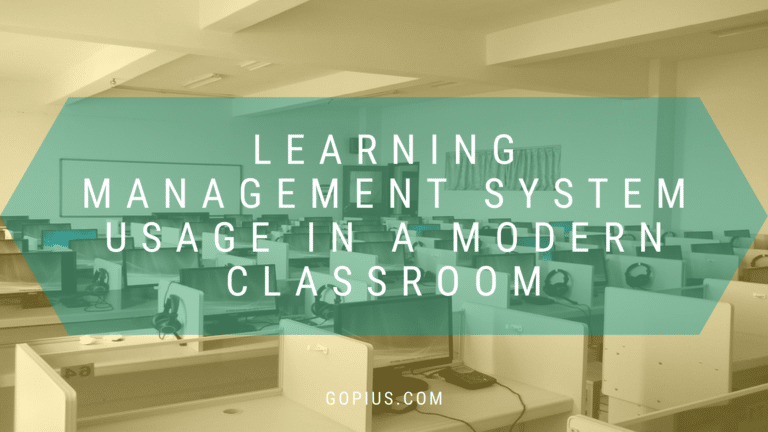How to Build Great E-Learning Games

E-learning is a proven model for drive and engagement within your organization. When implemented effectively, it is a potent force for positive change in employees’ mindsets, interactions with staff, and the effectiveness of projects. E-learning is a collaborative effort that involves multiple parties working together on a project or initiative.
It shares the same purpose as regular classroom classes to help employees learn tasks and processes by storytelling, testing ideas and theories, and exploring new perspectives. The ultimate aim is to build team confidence while aligning people toward a common goal. To accomplish this end, we use game-based e-learning to implement great e-learning games at our organization’s core focus level.
Read: The Need To Get Your E-Learning Design Up and Running!
What are E-Learning Games?
E-learning is a collaborative effort between students and teachers of a variety of disciplines. Like any other course, you can use a course pack or webinar to get students to engage in a variety of activities. However, unlike a traditional classroom, there are no isolated areas of learning for students.
Instead, each student is a guest lecturer or teach-in-race winner, collaborating with other students and peers in their areas of expertise. While games can be used to reinforce skills, strengthen relationships, and spark innovation, they can also be used to create an environment that encourages problem-solving, collaboration, and problem-solving leadership.
The 5 Phases of Great E-Learning Games
The Learning Company uses five different types of games to help improve collaboration, problem-solving, and audience growth:
- Understanding the customer journey. The customer journey is the heart of e-learning games. It’s the journey a customer takes when they want to learn more about their retailer. The customer journey is the most critical aspect of e-learning games. It’s the only starting point for designing and implementing great games.
- Understanding your market. Understanding your market is the first step toward designing and implementing great games. It starts with a close analysis of your existing customer base to understand their needs.
- Understanding your current market size. Once you understand your current market size, you can begin to realize the value of using your existing client base in your new game.
- Understanding your competition. Understanding your competitors’ needs and wants also starts with understanding your own. You can look at their product and services, their strategy, and the trends they’re following to come up with your perfect game.
Best Tools for Building Games
The best tools for building great games are those that encourage problem-solving, collaboration, and problem-solving leadership.
Ideas Engine — An idea engine is a tool that helps you create and collaborate with games. You can use Ideas Engine to create and engineer great games.
Brainstorming — A brainstorming exercise builds confidence by encouraging brainstorming and coming up with new ideas. You can use Brainstorming to create great games, but it’s especially suited to the artsy-farty kind of game.
Designing — In a design exercise, you’re trying to come up with new and creative ways to display information and offer a new type of experience to your customers. The end goal is to come up with something that they will remember and feel challenged by.
How To Make Learning Games More Successful
Games can be used to educate a variety of concepts and abilities. Corporate learning specialists are quickly discovering this and allocating cash to the development of simulation games to engage and train corporate learners. It is possible to guarantee that learning games are efficient and memorable for a variety of audiences by using the right design principles.
Details are Required
The creation of a simulation that merely gives cues on the “surface” aspects of the skill to be learned, such as straightforward actions and consequences, is a typical error made by developers. A student needs sufficient knowledge to enable them to select the best course of action from a variety. Additionally, you should give him or her ample time to think about the facts before starting the game. Therefore, the student should be adequately prepared before the game – to boost confidence and ensure better performance.
Creating Suitable Environments
To enable players to draw the appropriate comparisons between the game’s environment and their actual workplace, the gaming environment must incorporate indications from that setting. To be effective, a learning game does not necessarily need to replicate the workplace in every way. Incorporating recognizable contextual cues into your game is a good method to make the connection between “virtual” and “real.” We looked at department store floor designs and picked 5 of the most typical layouts to use as a learning exercise for sales employees to learn about merchandising. These typical layouts and the popular shopping areas within them were incorporated into the design of the game.
The gamers were then instructed to roam about the digital “store” and practice spotting the best merchandising locations. Making a virtual environment is a fun technique to assist students in drawing connections between the game and the actual world. A typical design mistake, meanwhile, is to make a virtual environment so complex that crucial cues relating to the real-world work environment are either not included or are obscured by the excess. The best approach when constructing a virtual world is to incorporate cues that are necessary for setting the appropriate context and leave out the extraneous.
Optimal Ratio Between Entertainment and Education
Another issue with excess is when the learning game turns into a completely entertaining experience and loses sight of its primary objective, which is to transmit the abilities required for professional greatness. This typical design flaw in learning games produces a gaming experience that does not advance learning but instead diverts the player’s focus away from investing time and effort in mastering the job-related skills. However, a learning game can strike a balance between fun and learning.
An experience that is removed from the learner’s workplace can be used to construct a learning game. However, consistent prompts throughout the encounter might help the student stay grounded and keep their attention on the core objective of learning.
For instance, we developed a scavenger hunt game for a big bank’s employees. The trainees’ work setting was removed from the hard gaming experience, but the hints offered practical advice on improving customer communication. As the player laboriously advances toward the goal, the hints guide him and teach him valuable skills along the way.
Ample Feedback
Whether in a classroom setting, an online course, or even a learning game, feedback is a crucial component of learning. In a game, feedback can be given in a wide range of methods, including through scores, reward points, extra ‘powers,’ direct communications, or other game features.
Aiming to motivate players to play more or feel pleased with their performance, feedback is frequently quick and ongoing in entertainment games. Feedback in a learning game must be targeted at the players’ performance in relation to the practical skill being taught.
Even if a player commits an error or omission, feedback must be offered, along with an explanation of the implications in the context of a real-world workplace situation. This will help the student better comprehend their blunders and steer clear of them in real-world work situations.
Delayed feedback, frequently presented as a message at the conclusion of a game round, can also be useful for encouraging reflection on learning. This aids in the students’ retention of the information. Feedback that doesn’t clarify the player’s error but rather states whether something was done correctly or badly is ineffective. Feedback must facilitate a clear grasp of the information shared in order to properly reinforce learning.
Appropriate Levels of Difficulty
Finally, in order to keep players’ interest and ensure that they learn from the gaming experience, learning games must give the right obstacles to the players. Learners will become disinterested and give up if the game experience is too basic. If something is too difficult, students will give up in frustration.
If the level of challenge is just right for your learners, they will find the problems they solve to be motivating, fun and most importantly learn from them. It is important to design the challenges to suit the majority of the learners.
If the learner group has a mix of expert and novices, it is then better to demarcate initial challenges and keep it optional for experts who might find it too easy but will be interesting for novices to attempt.
Wrapping Up
E-learning games are a powerful tool to help employees learn new skills and apply them in real-world situations. They’re a great way to get people actively engaged in a cause they care about. And they’re a great way to build leadership, problem-solving, and collaboration skills.
E-learning games are a powerful tool for building trust and strengthening relationships within your organization. They can also be used as a way to inspire problem-solving, collaboration, and problem-solving leadership. E-learning games can help employees become better problem-solvers and leaders by encouraging problem-solving and collaboration.
They can also be used as a way to spark innovation and creativity, which can lead to new products, services, and ideas.






